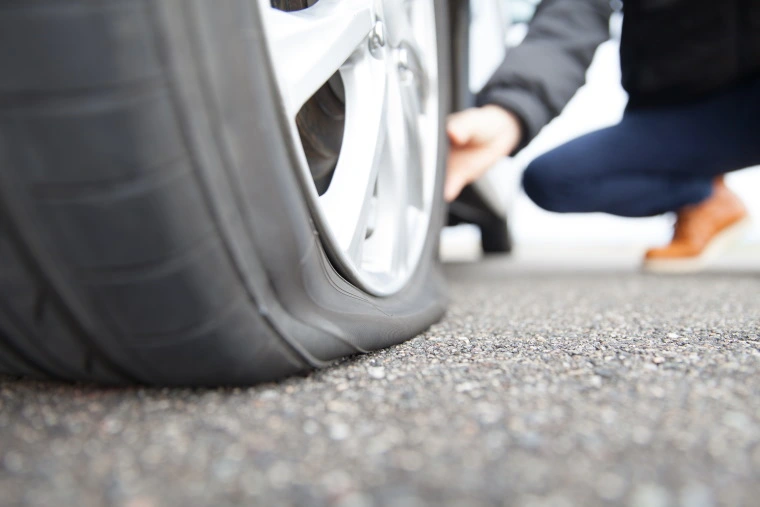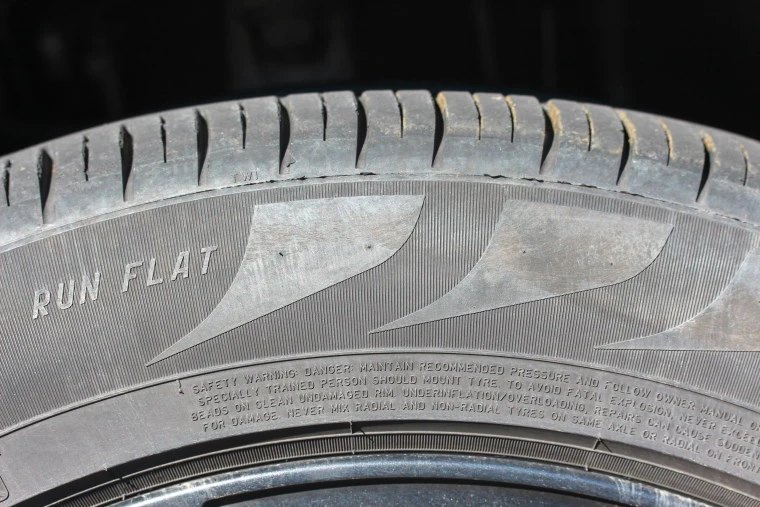What Are Run-Flat Tyres & How Do They Work?
Published on: Monday, 11 March 2024 | Author: Jack Dreyer
Picking the right tyre for your car is an important decision. There are many factors to consider, including grip, tread pattern and fuel efficiency rating - not to mention the technical jargon. It’s hard to know where to begin!
But, what if you could pick a tyre that keeps you safe in challenging scenarios and allows you the opportunity to seek help when required? That’s where run-flat tyres can come in handy.
Are you interested in learning more about what run-flat tyres are and how they work? Read on below.
What are run-flat tyres?
Run-flat tyres are specially designed to help you in sticky situations, for example, when you get a puncture. They have reinforced sidewalls that allow you to continue driving at a maximum speed of 50 mph for a maximum of 50 miles. The main advantages of using run-flat tyres are:
- The enhanced sidewalls: this helps to maintain control of the vehicle during a puncture incident.
- They’re people-safety first: you don’t need to change a tyre roadside, meaning no risky situations.
- Improved fuel efficiency: no extra tyre stored in the boot reduces the overall weight of the car, leading to less fuel consumption.
The only disadvantage to note is the cost - they are noticeably more expensive than conventional tyres. That being said, are they worth the cost? Let’s walk through how they work, and why it’s not advisable to switch between run-flat tyres and non-run-flat tyres.
How do run-flat tyres work?
The main factor, as mentioned above, is the reinforced sidewalls, which allows car owners to reach a safe spot for stopping. This technology not only ensures the safety of the driver, but the passengers and other road users.
There is another crucial element to how run-flat tyres work. They must be paired with a Tyre Pressure Monitoring System (TPMS) so that the driver receives a warning alert if the tyre becomes punctured. Otherwise, how would you know? Without this alert, serious health and safety concerns can arise.
Finally, it’s important that drivers adhere to the 50 mile range limit in the case of a puncture. Ignoring the limit could lead to further damage to the car, and more costly repairs.

Can I change run-flat tyres with non-run-flat tyres?
Generally, run-flat tyres are more expensive than non-run-flat tyres, so it may seem tempting to abandon run-flat tyres for a cheaper alternative. While this is an enticing concept, we would advise against it.
Here’s why.
They are part of the car specification
If you’re purchasing a new car, you will find that run-flat tyres are normally fitted to the vehicle when it’s made. Equally, if you purchase a second-hand car, make sure to check the specifications of the car to see if it requires run-flat tyres before purchasing any new tyres.
No space for a spare tyre
If the car has been designed with run-flat tyres in mind, it’s likely that the space used for a spare tyre has been utilised for other purposes. If you were to experience a puncture on a non-run-flat tyre with no spare tyre in the boot, you would be left stranded.
Ultimately, it’s better to follow the specifications of the car and stick to run-flat tyres if that’s what your vehicle requires. This will ensure it’s equipped for any potential challenges further down the line.
Tyre advice you can trust
We think it’s safe to say that installing run-flat tyres is a sure-fire way to keep yourself, your passengers and other road users safe, while allowing you to get your vehicle to a local mechanic to receive help.
If you’re looking to get run-flat tyres fitted on your car, speak to the experts at your local Tyre Pros centre.
Don’t forget to regularly check our blog for the latest advice and guidance on tyres, brakes and other services.




